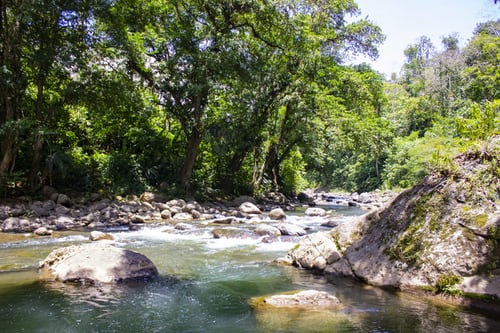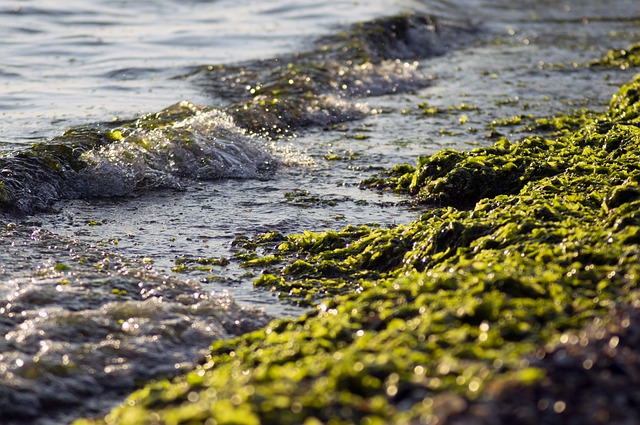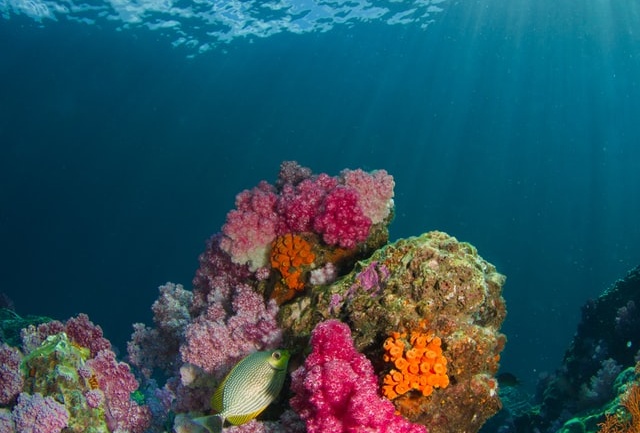By Joseph Wright, staff writer for Save The Water™ | September 2, 2014
Introduction
Natural resources are essential to human life, many of them being finite. When someone uses a finite resource (forests, fish, clean water), they make that resource less available to others. These resources are known as Common-Pool Resources (CPRs). [1] Famed ecologist Garrett Hardin saw an inherent problem with CPRs, which he dubbed ‘the tragedy of the commons’ in a 1968 article published in Science. [2] The functional example in Hardin’s theory looks at grazing lands. Each herder will place more cattle on the land (degrading the resource) in order to get the most benefit they can. They do this acting on the premise that if they do not introduce more cattle, another herder will. [2] As the theory stands, it can be applied to oil extraction, the use of clean water, global fish stocks and a whole host of environmental issues. Since Hardin’s article, two main solutions to the ‘commons’ have become popular. The first being full government regulation of the resource while the second is complete deregulation of the resource allowing market forces to guide the resource. In response to these two solutions are an economist and one small nation.
Problem
There are a number of issues present here. An assumption is made that government regulation is inherently beneficial. In many instances, it has been found that self-regulatory policies can often be more effective than governmental ones. A notable example is that of New England lobster fisheries. [3] It is not that governments are incapable of being efficient; in many cases they are simply too large to move quickly and effectively. When dealing with international waters, it becomes all the more difficult to attempt regulation, as each nation has a different personal interest at stake. Privatization of the commons makes the same fatal mistake in assuming that market forces or land owners will be skilled at resource management or even concerned with long-term ramifications.
An economist named Elinor Ostrom suggested that CPRs can be successful and sustainable without succumbing to total regulation or privitization. For her work in CPR management, Ostrom was awarded the Nobel Prize for Economics – the first woman to ever receive the award. She found that if a CPR had eight specific management principals (listed below) in place, it would provide for users without diminishing the resource. [4] Ostrom traveled the world citing examples in Los Angeles, Kenya, and most notably Spain, to name a few. [4][5] Through the course of her research, Ostrom found that when people acted as group, they collectively cared for a resource properly. But what about those who refuse to act as a group, or do not have the means?
Solution in Progress
In Costa Rica, an innovative program known as Payments for Environmental Services (PES) has been instituted. Under this program, land owners can enter into an agreement with the government where they keep from deforesting or developing their land. In exchange, the government compensates them depending on how ecologically-sensitive the area is and how large the area is. [6] [7]This program, although it takes a different shape, follows Ostrom’s design principles.
What Can I Do?
In the United States, a similar program exists to that of Costa Rica’s. Land owners who own agricultural or formerly agricultural lands, or are in ecologically-sensitive areas, may enroll in one of the government’s Conservation Programs. [8] When enrolled in the program, the landowner agrees to either plant native/ecologically beneficial plants or leave the land untouched altogether in exchange for yearly payments from the government, similar to Costa Rica. [8][9] You may enroll in any of the programs you are eligible to through your local Farm Service Agency (FSA). By participating in these programs, you can help improve water quality, support a collaborative program, and receive compensation.
Locate Your Local FSA
Ostrom’s Management Principels
1. The CPR has clearly-defined boundaries (effective exclusion of
external unentitled parties)
2. There is congruence between the resource environment and its
governance structure or rules.
3. Decisions are made through collective-choice arrangements that
allow most resource appropriators to participate.
4. Rules are enforced through effective monitoring by monitors who are
part of or accountable to the appropriators.
5. Violations are punished with graduated sanctions.
6. Conflicts and issues are addressed with low-cost and easy-to-access
conflict resolution mechanisms.
7. Higher-level authorities recognize the right of the resource
appropriators to self-govern.
8. In the case of larger common-pool resources: rules are organized and
enforced through multiple layers of nested enterprises.
- Hess, C. “Research on the Commons, Common-Pool Resources, and Common Property.” Indiana University. Accessed 2006. http://dlc.dlib.indiana.edu/dlc/contentguidelines
- Princeton University. “Tragedy Of the Commons.” Accessed 2014. http://www.princeton.edu/~achaney/tmve/wiki100k/docs/Tragedy_of_the_commons.html
- McGoodwin, James. “SOME EXAMPLES OF SELF-REGULATORY MECHANISMS IN UNMANAGED FISHERIES.” Food and Agriculture Organization of the United Nations. Accessed 2014. http://www.fao.org/docrep/005/ac749e/AC749E04.html.
- Walljasper, Jay. “Elinor Ostrom’s 8 Principals for Managing a Commons.” On The Commons. Accessed 2011. https://www.onthecommons.org/magazine/elinor-ostroms-8-principles-managing-commmons.
- Wood, W.W, and A.S Alsharhan. Water Resources Perspectives: Evaluation, Management and Policy: Evaluation, Management and Policy (Developments in Water Science). N.p.: Elsevier Science, 2003.
- Pax Natura. “Payment for Environmental Services (PES) Program Highlights.” Accessed 2014. http://www.paxnatura.org/payment-for-environmental-services-pes-program-highlights/
- Barton, David. “Payments for Ecosystem Services: Costa Rica’s Recipe.” International Institute For Environment and Development. Accessed November 29, 2013. http://www.iied.org/payments-for-ecosystem-services-costa-rica-s-recipe
- United States Department of Agriculture. “Conservation Programs.” Accessed 2014. https://www.fsa.usda.gov/programs-and-services/conservation-programs/
- United States Department of Agriculture. “Conservation Reserve Program.” .





